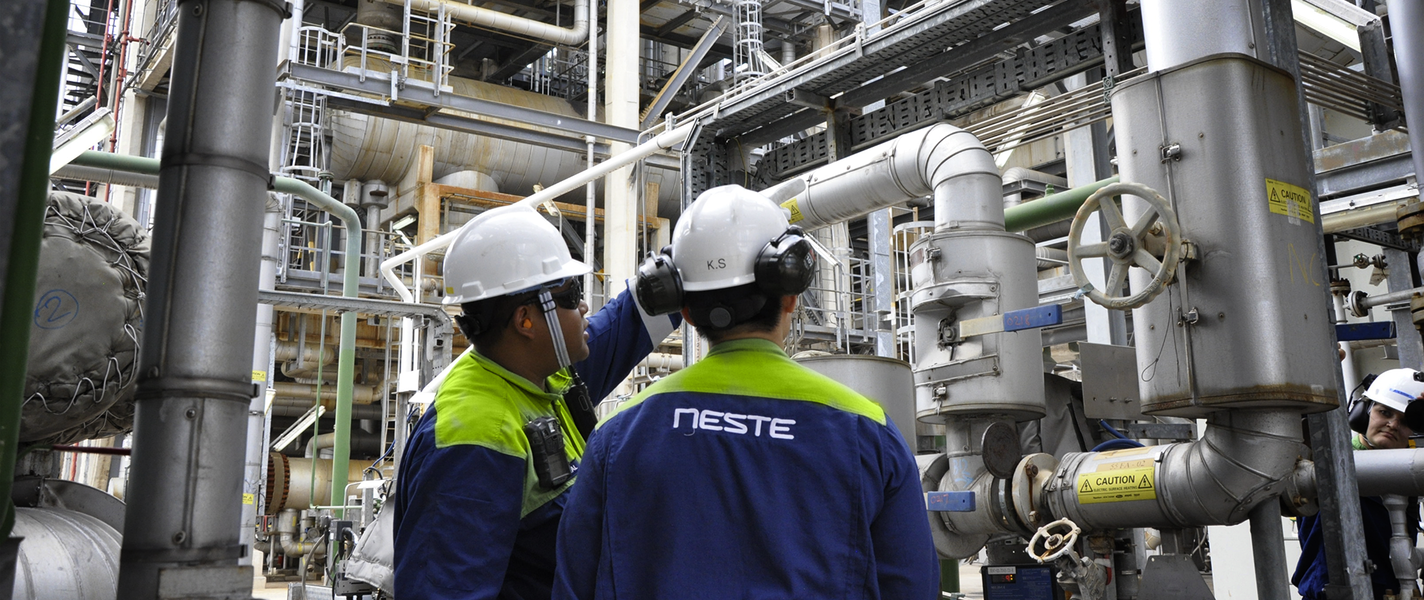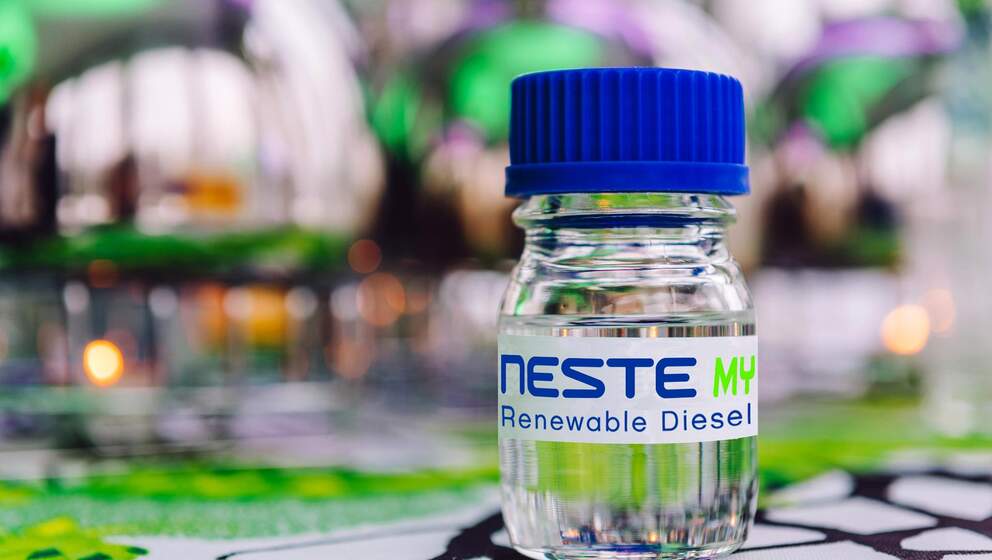Fuel for a Revolution: Renewable Diesel Will Power Transportation Transformation

Written by Matt Leuck
Here’s a debate you’re not likely to hear on a loading dock or around a transportation company’s office.
“Renewable diesel is an evolutionary step in the 100-plus-year history of fuel refinement.”
“No, it’s not. It’s a revolutionary breakthrough that enables fleets to better manage fuel spend, reduce maintenance costs and avoid costly modifications or additional investment.”
Fleet managers are too busy for this academic argument. Instead, they have to make sure trucks depart and arrive on schedule and that customers’ freight or public services get delivered safely and efficiently.
Yet a key component in making such logistics possible—now and 10 years down the road—is understanding that renewable diesel is not just another small advance in the long development of diesel fuel. It’s on the leading edge of the next revolution, and it’s critical for providers of transportation services to fully understand and take advantage of it.
The Future Calls for Cleaner Diesel
Change is coming fast, like an 18-wheeler rolling downhill on Interstate 5 through The Grapevine in California. In that state, air quality has long been a challenge; and, the transportation sector contributes most of the greenhouse gas emissions (41 percent).[1] California Governor Jerry Brown signed an executive order in October, committing the state to remove as much carbon dioxide (CO2) from the atmosphere as it emits by 2045. To meet the goal, fleets are not going to be able to continue relying exclusively on petroleum diesel, which currently powers 98 percent of the more than 4 million heavy-duty tractors and trucks in the United States.[2]
To be fair, I acknowledge that diesel technology is cleaner than ever. From 2007 to the present, manufacturers of engines and trucks achieved federal goals for fuel economy and greenhouse gas emissions standards through iterative engine and emission control improvements.[3] Nevertheless, combustion of conventional petroleum diesel fuel remains one of the largest sources of particulate matter (PM), nitrogen oxide (NOx) and CO2[4], and because trucks have long life cycles Class 8 and heavy-duty trucks purchased prior to 2007 and equipped with older diesel technology could be on the road in 2027 and beyond.
That’s why fleet managers see alternative fuels as a way to lower the environmental impact of existing diesel trucks and the ones to be purchased in coming years. Alternative fuel options include biodiesel, compressed natural gas (CNG), liquefied petroleum gas (LPG) and electricity (generated onboard by hydrogen fuel cells or stored in rechargeable batteries). Each contributes to reductions in tailpipe emissions, but it remains to be seen whether one of these alternatives could supplant petroleum diesel as the primary fuel for Class 8 and heavy-duty trucks.
Why the hesitation? Not all fleet managers are convinced the competing technologies provide the performance and efficiency required for hauling 80,000-pound payloads across the state or on local runs with the heavy-duty diesel trucks firefighters, bus drivers, or sanitation and highway crews use.
What’s more likely to happen is a diversification of fuel sources:
- Diesel engines are installed in 80 percent of new Class 8 and heavy-duty trucks sold today; that number is expected to drop to 66 percent by 2040 as acceptance of other powertrains grows.[5]
- Increases in diesel fuel economy could also keep petroleum diesel relevant for years to come.[6]
- So is the fact that refueling or recharging facilities required for electric trucks and other alternative fuels are limited, or are going to have to be built along truck routes.
- Range and weight restrictions will also slow adoption. The estimated range for some electric Class 8 trucks is 300 to 500 miles.[7] Diesel trucks can go farther - as far as 1,500 miles before refueling.
All of these reasons build the business case for fleet managers to switch from petroleum diesel to renewable diesel, a next-generation alternative fuel that can be used in existing trucks with no change in infrastructure.
Renewable Diesel: What’s Next for Fleets
Renewable diesel is a non-petroleum hydrocarbon fuel made from 100 percent renewable raw materials. As the transition to a lower carbon economy speeds up, renewable diesel has emerged as a road-tested, proven alternative to CARB (ULSD) petroleum diesel.
Products such as Neste MY Renewable Diesel™ meet the ASTM-D975 standard for diesel fuels, which means when the switch is made there are no modifications needed to either vehicles or fueling infrastructure. Neste MY Renewable Diesel contains no aromatics or impurities, which enables the fuel to combust with maximum efficiency while decreasing the frequency of injector maintenance and diesel particulate filter (DPF) regenerations. Renewable diesel improves engine operability with higher cetane ratings than CARB diesel and biodiesel blends, while requiring less system maintenance, thereby lowering fuel spend for fleet managers. Moreover, renewable diesel offers a longer shelf life and produces less environmental impact compared to petroleum diesel..
Being a second-generation biofuel also means renewable diesel has a lifetime carbon footprint at least 50% lower than petroleum diesel, and in the case of Neste MY up to 80% lower. That’s as revolutionary as it gets.
Sources
[1] California Air Resources Board, “California Greenhouse Gas Emission Inventory – 2018 Edition,” July 11, 2018, https://www.arb.ca.gov/cc/inventory/data/data.htm (accessed November 6, 2018).
[2] Allen Schaeffer, “Diesel and the Future of Trucking”, Diesel Technology Forum, November 16, 2017, https://www.dieselforum.org/news/diesel-and-the-future-of-trucking(accessed November 6, 2018).
[3] "U.S. EPA 2007/2010 Heavy-Duty Engine and Vehicle Standards and Highway Diesel Fuel Sulfur Control Requirements” http://www.meca.org/regulation/us-epa-20072010-heavyduty-engine-and-vehicle-standards-and-highway-diesel-fuel-sulfur-control-requirements
[4] U.S. Environmental Protection Agency and the National Highway Transportation Safety Agency, “EPA and NHTSA Adopt First-Ever Program to Reduce Greenhouse Gas Emissions and Improve Fuel Efficiency of Medium- and Heavy-Duty Vehicles,” 2011,https://nepis.epa.gov/Exe/ZyPDF.cgi/P100BOT1.PDF?Dockey=P100BOT1.PDF (accessed November 7, 2018).
[5] “Reinventing the Truck: Understand the impact of new technologies and powertrain shifts on the logistics, trucking and energy industries,” 2018,https://cdn.ihs.com/www/pdf/Reinventing-the-truck-brochure.pdf (accessed November 5, 2018).
[6] William B. Cassidy, “Electric truck use accelerates, but diesel to keep dominance,” Journal of Commerce, September 24, 2018, https://www.joc.com/trucking-logistics/electric-truck-use-accelerates-diesel-keep-dominance_20180924.html (accessed November 5, 2018).
[7] Bloomberg News, “Electric trucks facing long road to unseat diesel engines,” Indianapolis Business Journal, August 22, 2018 (accessed November 2, 2018).
[8] Ibid.

